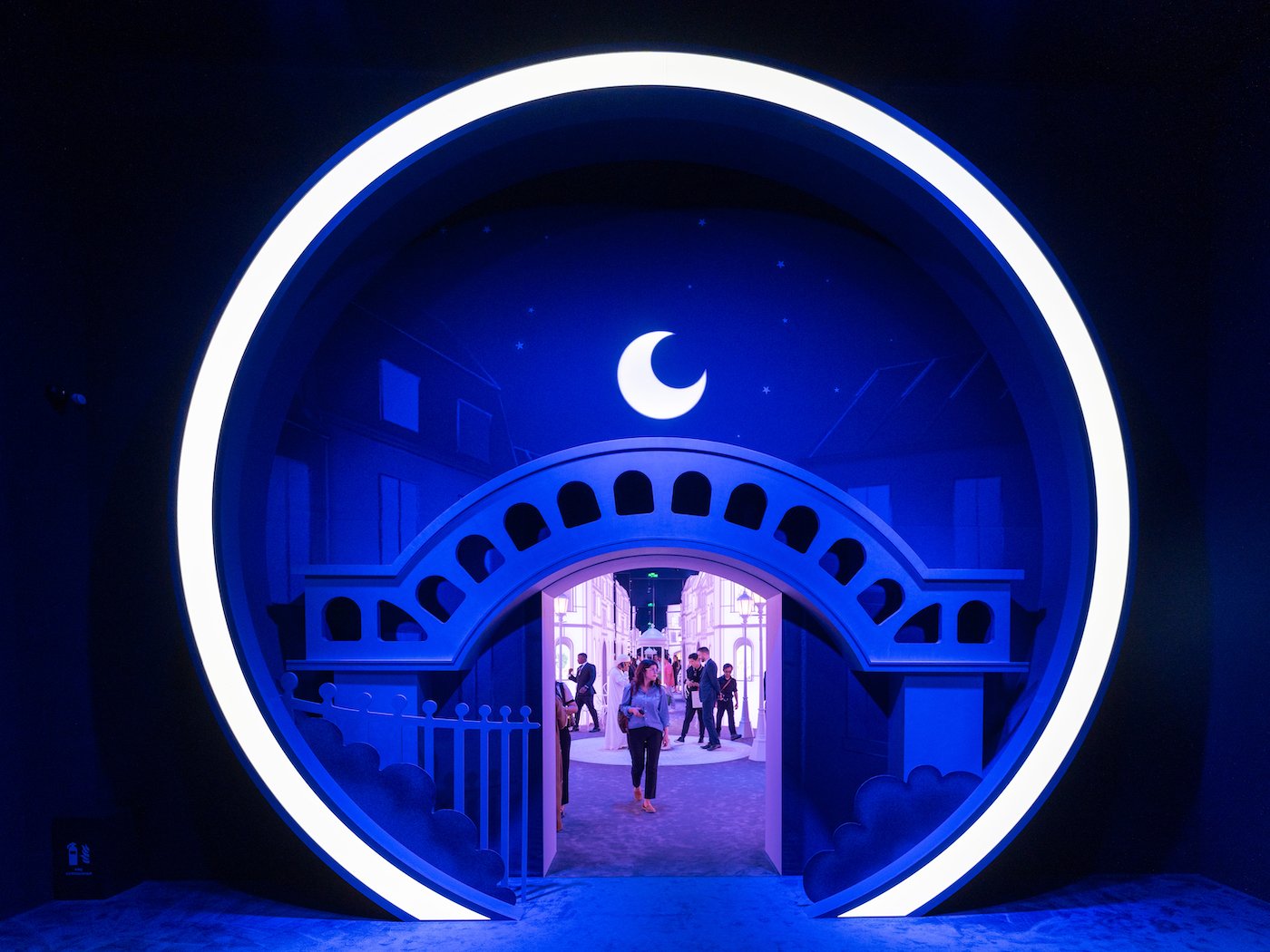s the day draws to a close at the Dubai International Financial Centre, and the flood of visitors who have come to admire some of the world’s most exclusive and sought-after watches slows to a trickle, we meet Hind Seddiqi, Director General of Dubai Watch Week, now an established event on the international watchmaking calendar.
At the heart of the event is a long pavilion housing over fifty watch brands, many of them independent creators. Here you can also discover the winners of the Grand Prix d’Horlogerie de Genève. This central pavilion is surrounded by imposing spaces created by some of the biggest names in watchmaking: Rolex, Audemars Piguet, Chopard, Van Cleef & Arpels, Bulgari and Chanel.
-

- The spectacular growth of the United Arab Emirates as a destination for Swiss watchmaking is clearly demonstrated in these statistics from the Federation of the Swiss Watch Industry (FH). Only China has experienced higher growth.
During the fair, it is possible to attend round tables and workshops, discover regional and global launches, and also meet the watchmakers. There’s a special sense of welcome, a curious combination of grandeur and opulence mixed with relaxation and convenience. As a destination, it’s both hedonistic and family-friendly – a place where excess and modesty go hand in hand. These contradictory elements have established the city’s reputation as a major international meeting place.
Spanning just under a week, Dubai Watch Week reflects the region’s passion for the art of watchmaking: a symbol of social success in a city with no shortage of visible signs of wealth, but also of technical ingenuity, cultural expression and artistic ambition. The 2023 edition, organised by leading local retailer Ahmed Seddiqi & Sons, attracted more than 23,000 visitors.
This fair has been something of a laboratory for different formats, serving as a model for next-generation horological events. It balances the often competing needs of professional and private clientele, cultural engagement and sales, regional and international aspirations. The event is also resolutely ‘non-commercial’, while simultaneously offering a launch pad for many brands and watchmakers, which have the opportunity to talk to some of their biggest collectors directly.
The fact that the attendees are overwhelmingly independent brands – of every size from ID Genève and Chronoswiss to Rolex and Audemars Piguet – is also striking. It’s as much a sign of the increasingly ’solo’ approach favoured by the groups, which are looking to bring their distribution and communications in-house, as it is a reflection of the success of independent watchmakers, whose exclusive creations are highly valued in the Gulf, where the art of differentiation is well understood.
Hind Seddiqi is nevertheless keen to point out that, as a cultural gathering, the event is open to all: “The name of the show is Dubai Watch Week, not Sediqqi. Our aim is to bring the whole industry together, not just the brands we represent.”
What took the show to the next level was Rolex’s decision to come aboard in 2019. Now, the organisers are looking to give the event even more global resonance, encouraging brands to use the platform for international announcements, not just regional ones. At the 2023 edition, Bell & Ross unveiled its BR-X5 Green Lum, while Frederique Constant introduced its new Highlife in collaboration with The Avener.
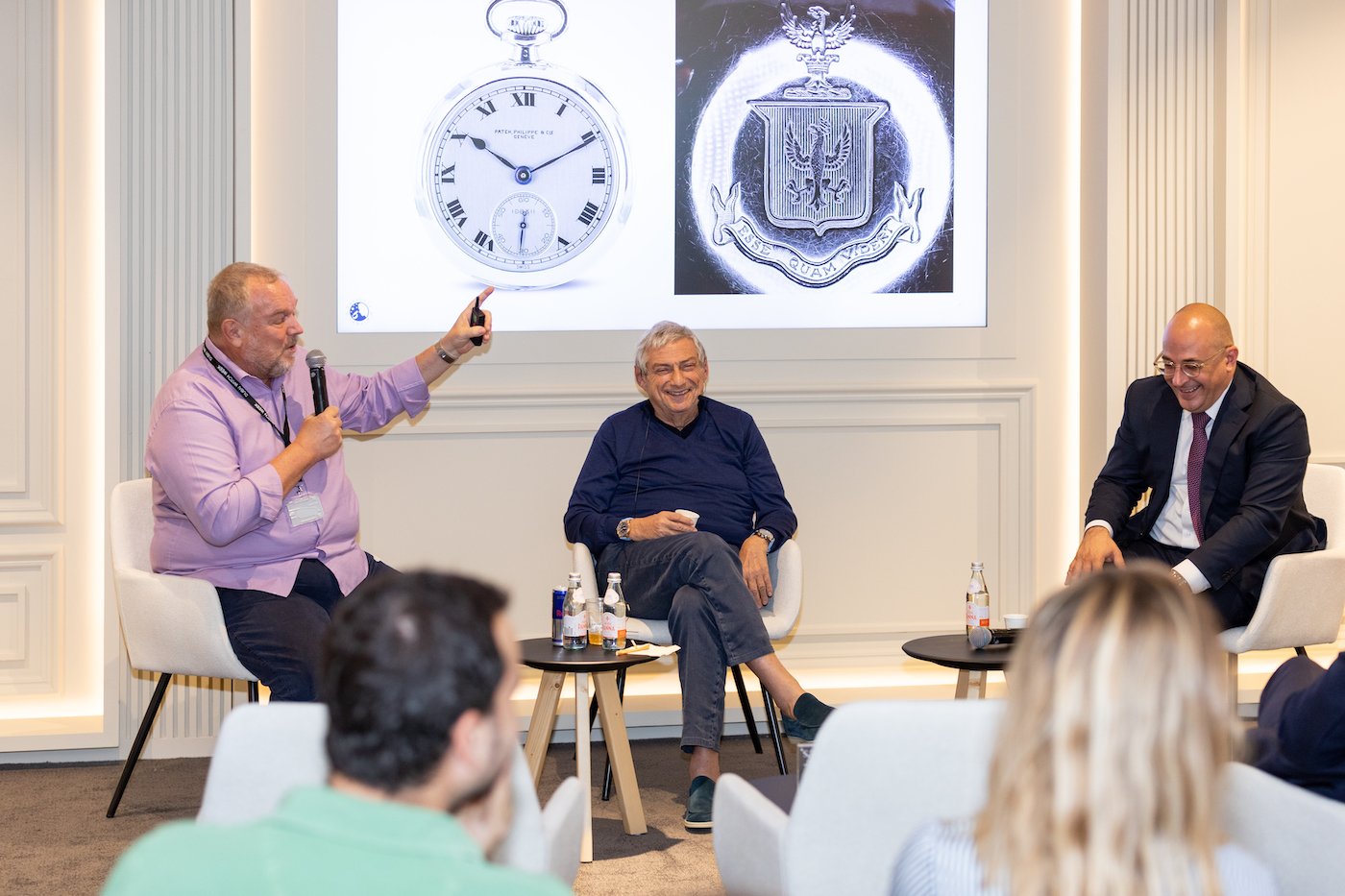
In the face of its unequivocal success (ten more brands took part last year), will the event be able to welcome more watchmakers for future editions? “That’s the biggest challenge,” replies Hind Seddiqi. “There isn’t enough space left, but enlarging the surface area wouldn’t necessarily make it possible to maintain the same experience, on a human scale.”
The proximity with the watchmakers, the direct dialogue possible during the event, is one of the most valuable features of the show. It’s possible to freely walk through the central pavilion of independent brands, while access to the major brands is more restricted.
“Connoisseurs are increasingly interested in knowing who the watchmakers and designers behind the names or brands are,” says Hind Seddiqi. “Exclusivity also plays an important role: many dream of acquiring a model by Rexhep Rexhepi, Philippe Dufour, De Bethune, H. Moser & Cie or Remy Cools.” Bridges are also being built between major groups and independent watchmakers, as illustrated by the new prize launched by Louis Vuitton to celebrate the most talented creators on the watchmaking scene.
“When I started in 2006 and we took our customers to visit workshops in Switzerland, general knowledge of watchmaking was much lower than it is today,” recalls Hind Seddiqi. “Today, connoisseurs and young collectors have high expectations: they want exclusive experiences that are also authentic, without commercial pressure. That’s the whole rationale behind our event.”
Given its ambitions and format, the show is expensive to organise. The biennial formula helps to keep costs under control, while ensuring the event can be planned carefully. “We always want the brands to come with something new. And in the long term, there will be more experiences, because our ambition is to bring the event to life throughout the year, thanks in particular to digital technology.” Between the exhibitions in Dubai, Ahmed Seddiqi & Sons switch to a different format: a travelling watch forum with a dedicated programme of conferences. Events have already taken place in London and New York.
Dubai Watch Week represents the peak of the horological season in the Middle East, and the focal point for the industry’s international attention on the region. But activity continues unabated for the rest of the year. Watchmaking will further dominate the Dubai skyline when the Burj Binghatti by Jacob & Co. – the brand’s first real estate project – is completed. This ‘hypertower’, which demonstrates in a very literal way the watch industry’s rise to prominence, aims to be the world’s tallest residential building.
“Dubai is our best international sales destination,” says Benjamin Arabov, who represents the new generation at the helm of the New York jeweller and watchmaker that bears his family name. At a time when thefts have become a serious problem in major urban centres worldwide, city safety has become an important factor for customers wishing to wear exuberant or expensive timepieces. Jacob & Co. is planning to open a second boutique in Saudi Arabia, after the one in Riyadh, the largest of its kind in the world. It was inaugurated in 2023 in the presence of Cristiano Ronaldo, who plays in the Saudi football league and is very close to the brand.
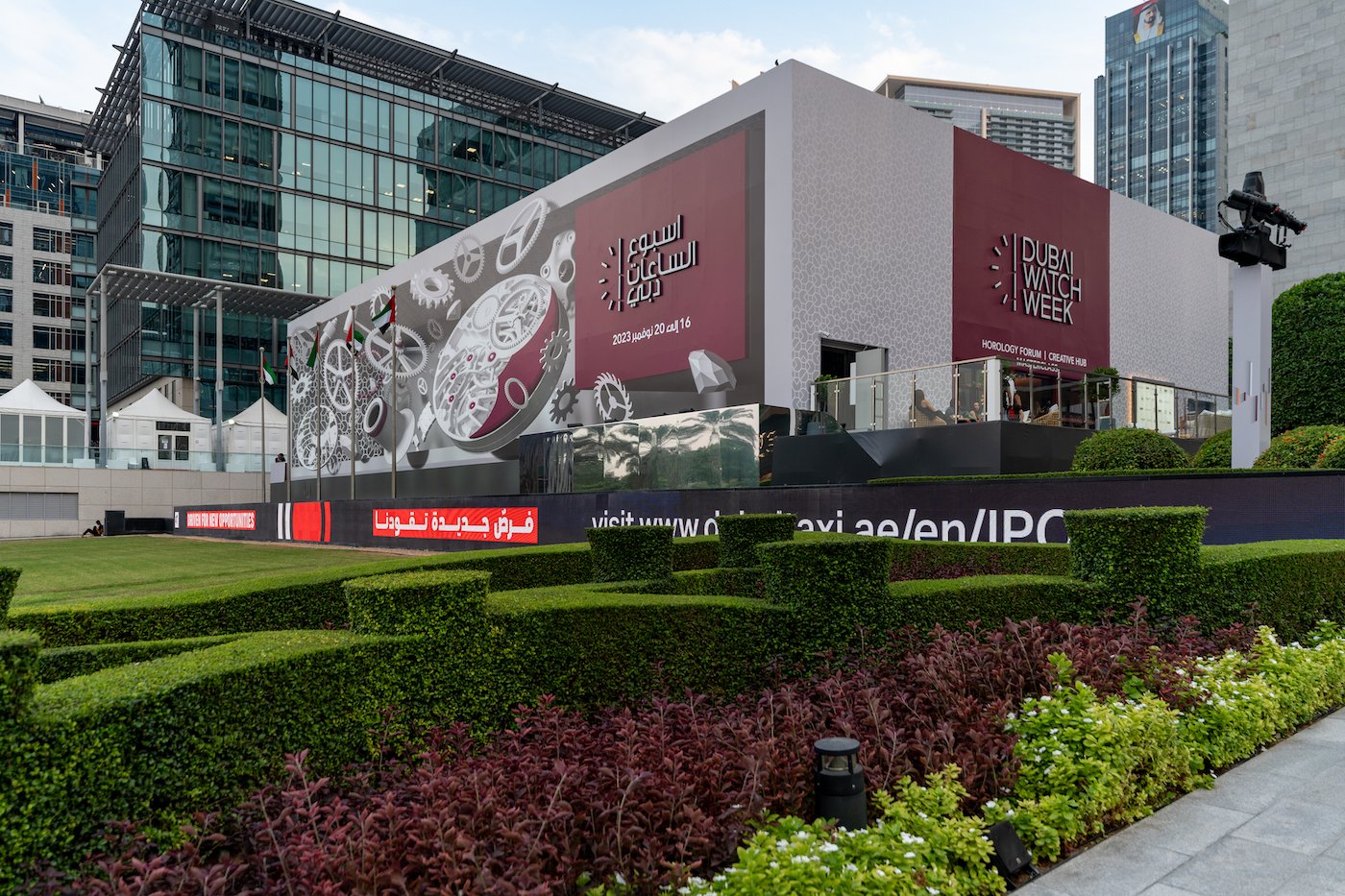
Representatives of several participating brands emphasised the special role played by the Middle East in the growth of luxury and ultra-luxury watchmaking over the last two decades. While, in terms of volume, the main focus has been on growth rates in China, the maturity of the local clientele in the Middle East is of particular interest.
“It’s the market of the future, very avant-garde, with strong expertise in all things collectible,” says Olivia Crouan, Chief Brand Officer of Audemars Piguet. “And with a city like Dubai, we are reaching not just a local clientele, but a truly international one.” Seemingly impervious to the vagaries of global geopolitics, the metropolis has become a haven for many of the world’s wealthiest individuals in recent years.
Having chosen to verticalise distribution, Audemars Piguet has opened its own boutiques and drastically reduced its network of partners. It now has fewer than 100 points of sale around the world. Some exceptions remain, however, such as Seddiqi in the United Arab Emirates. During Dubai Watch Week, which followed Audemars Piguet’s victory in the ‘Aiguille d’Or’ category at the GPHG, the brand’s Head of Complications, Anne-Gaëlle Quinet, was on site to explain the behind-the-scenes technical R&D. She explained that the manufacture is preparing to celebrate its 150th anniversary in 2025 with a “festival of complications”.
According to CEO Edouard Meylan, the Middle East now accounts for 12% of H. Moser & Cie’s sales. This is fine result, given that in 2013, the watchmaker’s first year in the region, they sold just... two watches there. “Dubai Watch Week helped a lot, because the event opened collectors’ eyes to other types of brands,” Edouard Meylan pointed out, noting that there was “a strong connection between local watch fans and the brands.”
“It’s a huge market, but not in terms of volume: we’re talking about the best collectors here, and they’re very selective,” he continues. For Edouard Meylan, the market can be summed up by the fact that ‘small’ collectors from the Middle East would be considered big collectors elsewhere. “When we reserve 20 or 30 pieces for this market, we know that there will be twice as many customers who will be frustrated because they won’t be able to get it.”
Managing this frustration has become a major part of the work of retailers of the most sought-after brands, in the Middle East and elsewhere. That’s why it’s also a good idea to work with a local partner: “They know their customers, they’re diplomatic and they’re in it for the long term. In reality, the Middle East market is bigger than the import figures suggest, because those who can’t get the pieces they want here go and buy them in Europe or the United States,” explains Edouard Meylan.
As a sign of the strategic importance of this market for the family brand, which produces 3,000 pieces a year and is enjoying double-digit growth, his brother Bertrand Meylan, who is in charge of distribution, recently relocated from Hong Kong to Dubai.
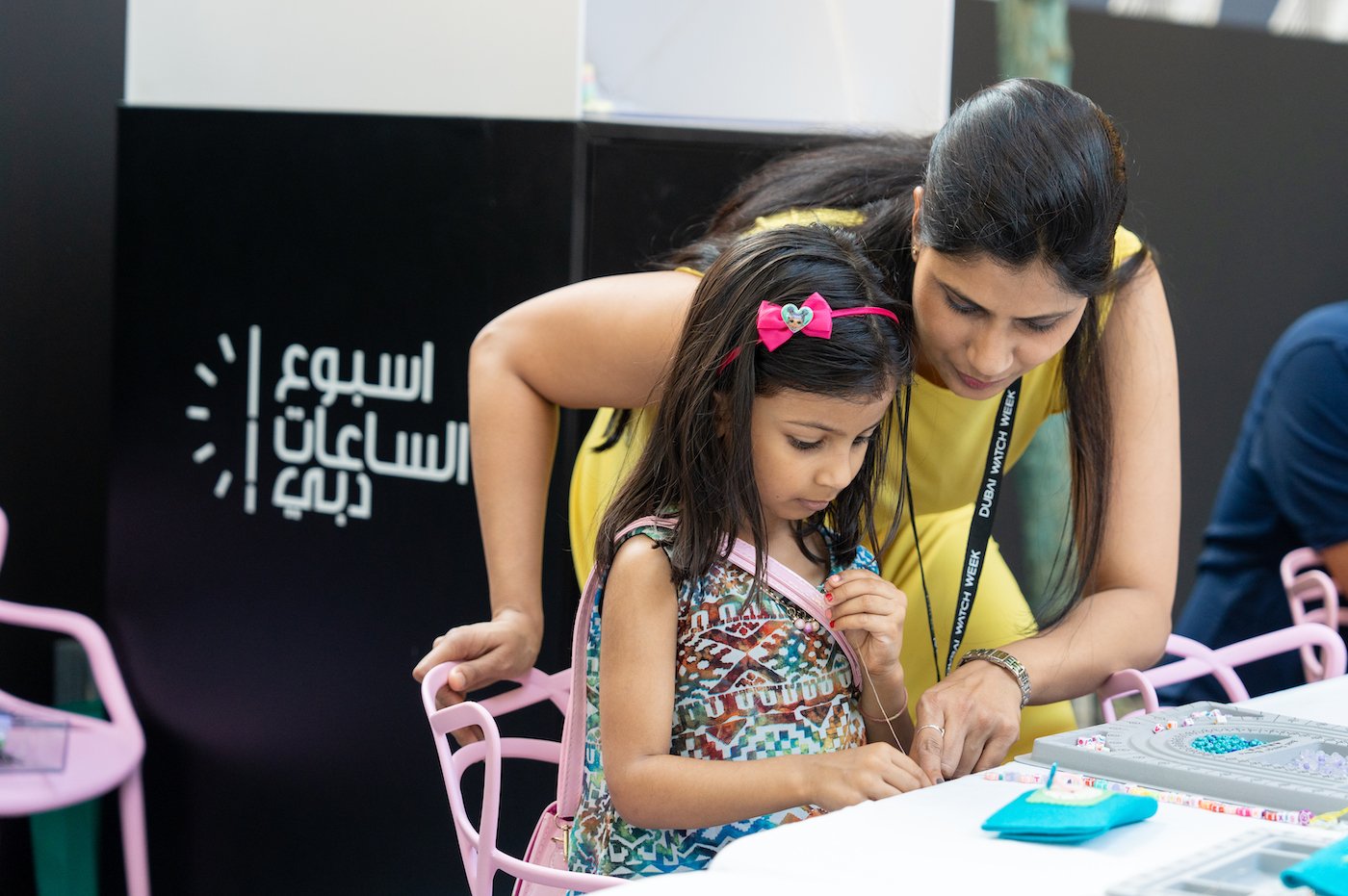
Louis Erard director Manuel Emch also lives part of the year in the United Arab Emirates, in Abu Dhabi. He explains why: “For us, 2023 was an exceptional year in the Middle East. Excluding online sales [which account for half of the brand’s total sales – Ed.], it’s a bigger market for us than Europe or the United States. But to succeed here, you need to build up strong relationships – that’s the key to this market, along with producing limited editions to highlight exclusivity.”
Louis Erard has focused on a market that many consider promising, given its decision to open up to the world, and bring in tourists and investors in a bid to reduce its dependence on revenue from hydrocarbons: Saudi Arabia and its ’Saudi Vision 2030’ programme.
What’s unusual about Louis Erard, which produced 4,000 pieces last year, is its accessibility, in the context of a local watchmaking ecosystem focused on luxury. It does, however, make a few forays into Haute Horlogerie, through collaborations, and sold nearly 100 tourbillons in the Middle East last year. “It’s a relatively young market, with wealthy collectors who are curious, uninhibited and quick to take an interest in many things. Watches are part of their lifestyle, but also of intergenerational transmission.”
On a more global scale, the status of watches has changed: Manuel Emch has observed a “renewal in the profile of buyers”, the likes of which he has not seen since the late 2000s. And while the brand has been available in the Middle East for a long time, it is still perceived as a new player there, not just because of its strategic and creative renewal, but also because of the arrival of these new generations of customers.
“The Middle East was one of the first markets developed by my father when he took over the brand,” confides Audrey Raffy at Bovet, who also lives in Dubai. “Our relationship with the Seddiqi family is longstanding and strong. There’s an impressive degree of stability here. You get the impression that nothing affects them and that the market remains dynamic whatever the global conditions. The only other place where I find such passion for fine watchmaking is Mexico, where I also spend a lot of time. I identify with both cultures.” Bovet has a strong ability to produce personalised and bespoke models, which certainly tips the scales in markets such as these, which place a premium on exclusivity.
In conversation, Mexico is also often mentioned as a market for major collectors. Perhaps not by chance, another internationally renowned watch show – SIAR – has broken new ground there, bringing together the best collectors, retailers and brands every year. All that remains is to apply the same formula to the other 190 countries on the planet, to ensure the future of watchmaking!
Bertrand Savary, CEO of Arnold & Son and Angelus, confirms: “About ten years ago, before we took over the brand, Arnold & Son had a representative in the region. Ten years later, people are still talking about him, because he created a tremendous amount of goodwill. We still benefit from that today.” There too, production is very exclusive: 350 models a year for Angelus, just under a thousand for Arnold & Son.
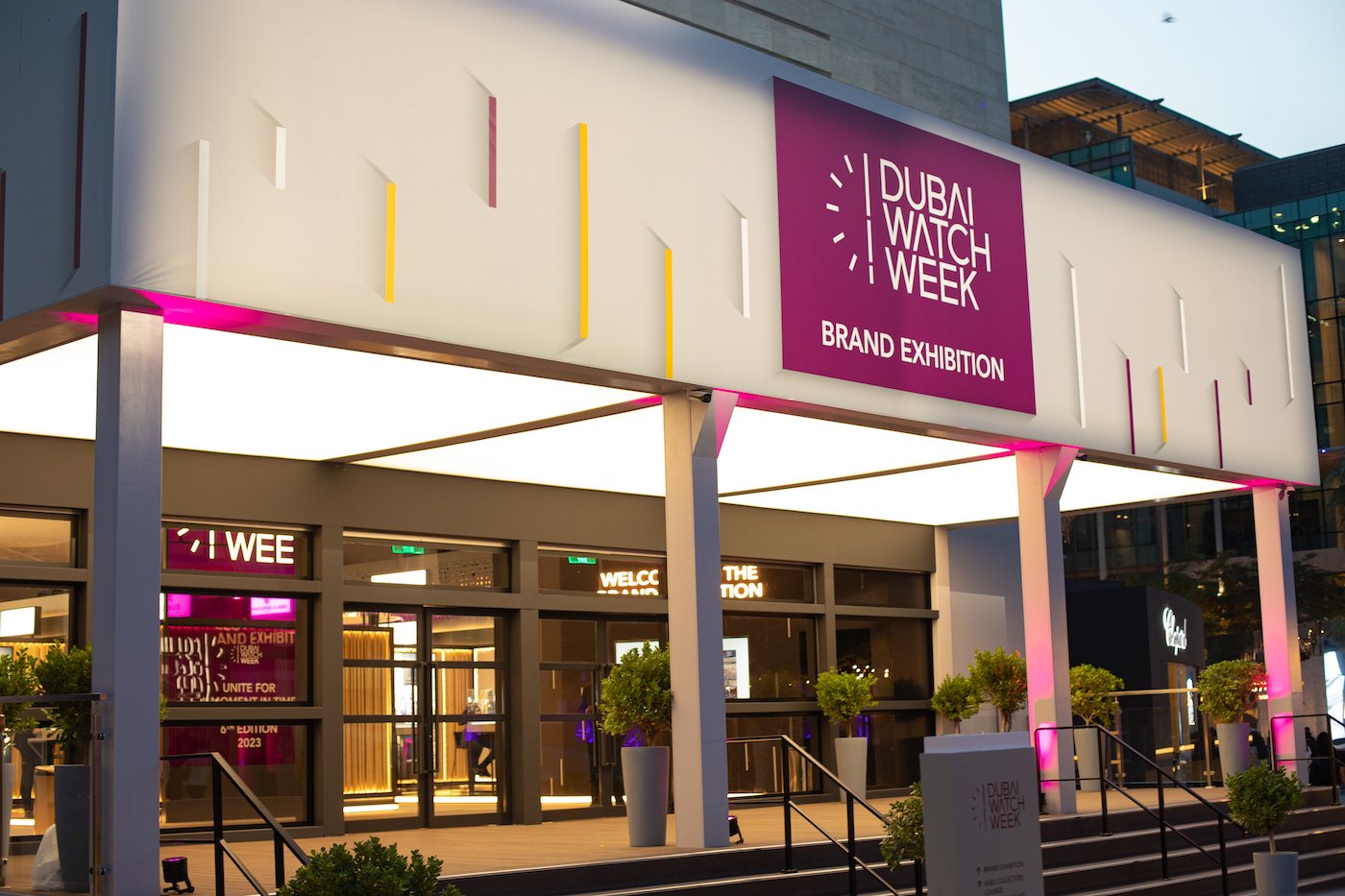
In an even more exclusive segment, Ferdinand Berthoud, with its fifty or so models a year, could certainly sell all its output locally, but prefers to ensure that opportunities are evenly distributed between its eight points of sale around the world. “We are gradually increasing our production, but as everything is finished by hand and the movements are fully decorated, we have to continually hire and train, which takes time,” explains managing director Vincent Lapaire. “We work the old-fashioned way, but that gives a different soul to our models, and collectors really feel it!”
Delivery times, which have become longer in recent years throughout the industry, remain a key concern. At the time of our interview, delivery for Ferdinand Berthoud was 18 months. “We do our utmost to keep waiting times reasonable for collectors,” the manager continues. “But it’s true that our watches are rarely seen in boutiques, because our partners know in advance which collectors are likely to be interested in the new models. Hence our very careful selection of points of sale.”
At Chronoswiss, which is aiming for annual production of 2,000 pieces, director and owner Oliver Ebstein points to difficulties in securing critical components, leading to production bottlenecks. Others, such as Carl F. Bucherer, have recently opted to produce less but at a higher technical level (and a higher price point), with a higher degree of customisation – a strategy particularly well suited to the Middle East. “It’s a complete reorientation, which also relies on high-quality distribution,” explains Chief Sales Officer Renato Bonina.
Other Swiss brands are still positioning themselves towards greater volume, however. This is the case of Norqain, which was founded in 2018 and has enjoyed a meteoric rise since then. It has been represented by Ahmed Seddiqi & Sons from the beginning, and was the official timekeeper of the Dubai Marathon in 2023. However, it has had to adapt its storytelling for the Middle Eastern market: “Because the watchmaking culture is highly developed here, we have to create exclusivity through things like limited series in order to establish ourselves,” notes its founder and CEO Ben Kueffer. Standard is not enough.
And it’s not just Swiss watchmakers that are benefiting from the robust health of the watchmaking industry in the Middle East. Christine Hutter, founder and CEO of independent German brand Moritz Grossmann (which is also distributed by Ahmed Seddiqi & Sons), was also present at Dubai Watch Week. While Asia and North America are her most important markets, she is seeing strong growth among well-informed local collectors.
This is critical for a niche brand that offers a high degree of personalisation and manufactures 90% of its movements in-house – features that the most discerning connoisseurs appreciate. Despite the dominance of the Swiss watchmaking industry, the order books of this German brand are full to 2026, and it has plans to increase production capacity.
Belgian industrial designer Benoît Mintiens, who launched his unconventional Ressence brand in 2010, has produced several limited editions for the Middle East, a region that accounts for 15-20% of the brand’s sales. “At the time, I hadn’t yet understood the potential of limited editions. One of the first requests for a special series came from here,” he explains. After deepening his knowledge of the art of the Arab world, he applied a special design combining skeletonisation and arabesque to his first edition targeted at the Middle Eastern market. A second edition with a unique guilloché pattern representing sunlight reflecting on sand was released in 2021.

Last year Ressence, which was aiming to produce 700 watches in 2023 and 1,000 pieces a year over the longer term, presented a model at Dubai Watch Week with a cloisonné dial and mosaics inspired by the Arab world. But production woes are also an issue for Benoît Mintiens who, in the face of extended delivery times and a lack of response from watch industry suppliers, has hired someone from the automotive industry to try to find alternative solutions!
The issue of logistics holding back the potential of Swiss watchmaking seems to be a recurring refrain, particularly for the Middle East, where there is a demand for special editions requiring non-standard manufacturing processes. The equation is clear: if you can’t deliver it, you can’t sell it. The waiting lists of some brands are also an “elegant solution” to hide the industry’s lack of responsiveness.
Russian master watchmaker Konstantin Chaykin explains that, with such high demand, he could easily sell his 300 watches a year directly; but he has chosen to work through retailers such as Seddiqi – a strategic decision aimed at “building the brand over the long term”. The Middle East, with a watch culture that embraces bold and exuberant designs such as his, is traditionally one of his most important markets.
Konstantin Chaykin continues to work under adverse conditions: his country is subject to international sanctions, making it difficult to find qualified personnel and machinery. “Everything requires more effort from us in terms of logistics, but our customers are very sensitive to our models. And even though we have a waiting list, we reserve at least 20% of our production for recruiting new customers. Within one or two days of the publication of a new model, the entire series is usually sold out. Delivery times are then around a year.”
Finally, we meet Jan Edöcs, CEO of Doxa, who has come to Dubai to celebrate a special relationship. The diving watch specialist brand was successfully relaunched in recent years (it produced 12,000 pieces last year and is aiming for 30,000 within five years). When the Seddiqis started out in the 1950s, Doxa was one of the first brands the family imported. Their shared history dates back to an era when the region’s economy was dominated by pearl fishing, and that local heritage has never really been forgotten.
